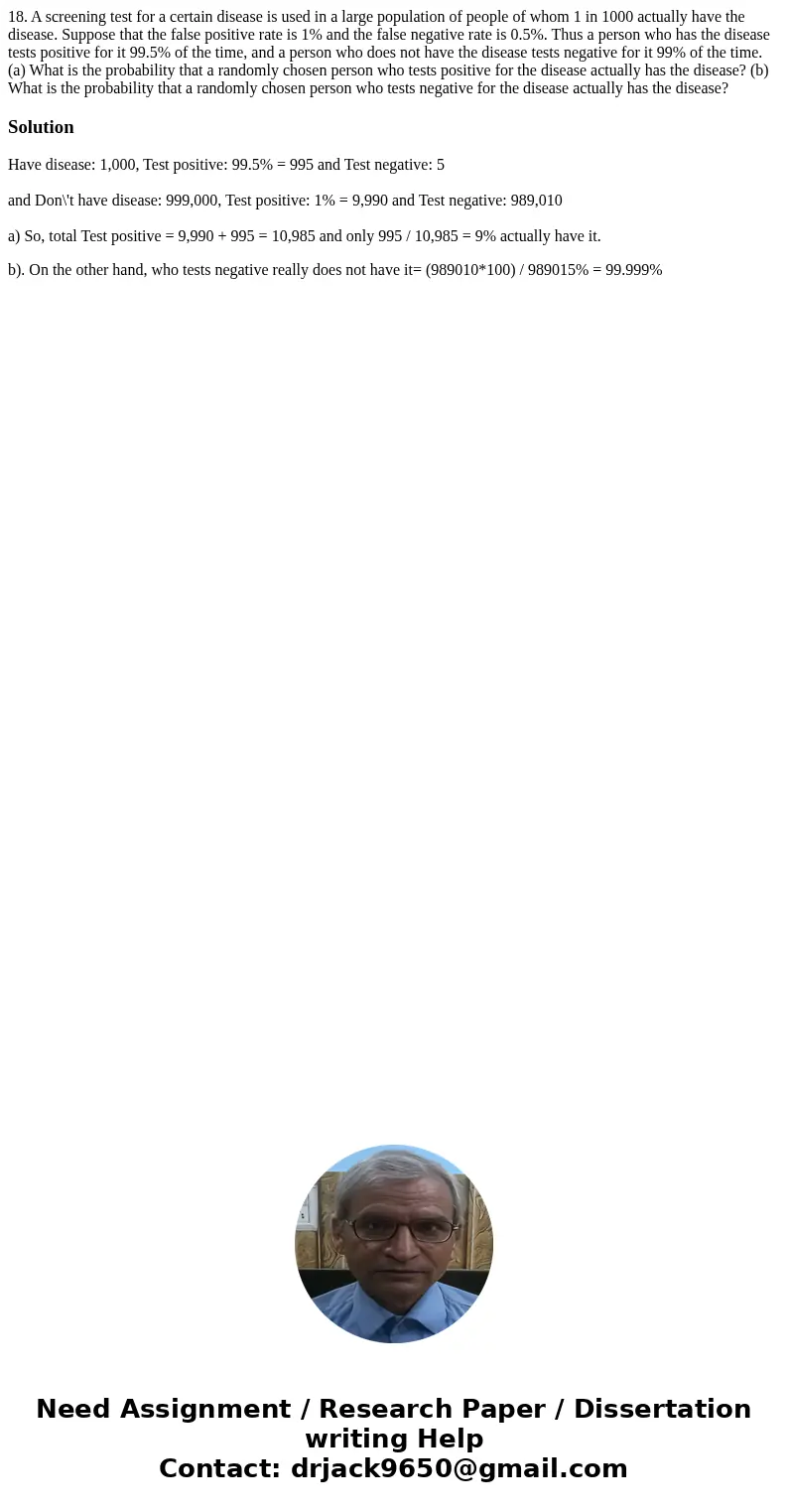18 A screening test for a certain disease is used in a large
18. A screening test for a certain disease is used in a large population of people of whom 1 in 1000 actually have the disease. Suppose that the false positive rate is 1% and the false negative rate is 0.5%. Thus a person who has the disease tests positive for it 99.5% of the time, and a person who does not have the disease tests negative for it 99% of the time. (a) What is the probability that a randomly chosen person who tests positive for the disease actually has the disease? (b) What is the probability that a randomly chosen person who tests negative for the disease actually has the disease? 
Solution
Have disease: 1,000, Test positive: 99.5% = 995 and Test negative: 5
and Don\'t have disease: 999,000, Test positive: 1% = 9,990 and Test negative: 989,010
a) So, total Test positive = 9,990 + 995 = 10,985 and only 995 / 10,985 = 9% actually have it.
b). On the other hand, who tests negative really does not have it= (989010*100) / 989015% = 99.999%

 Homework Sourse
Homework Sourse